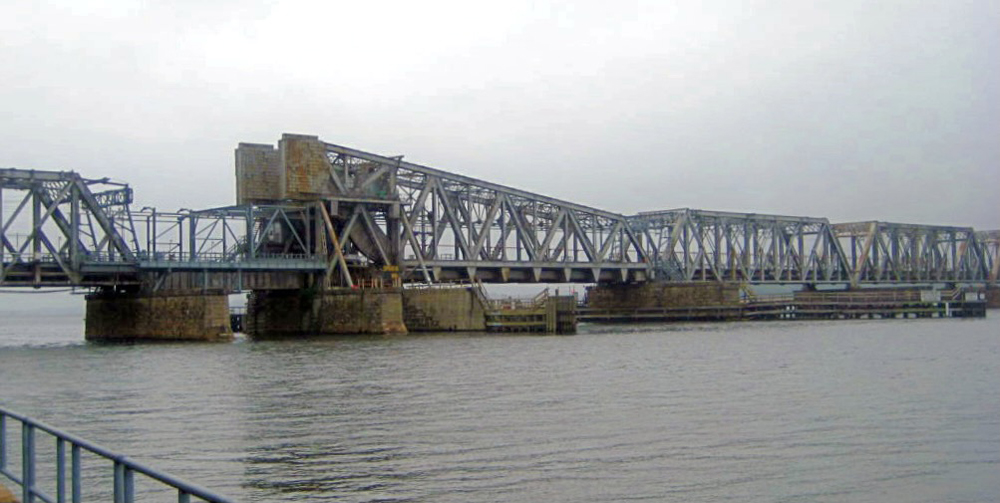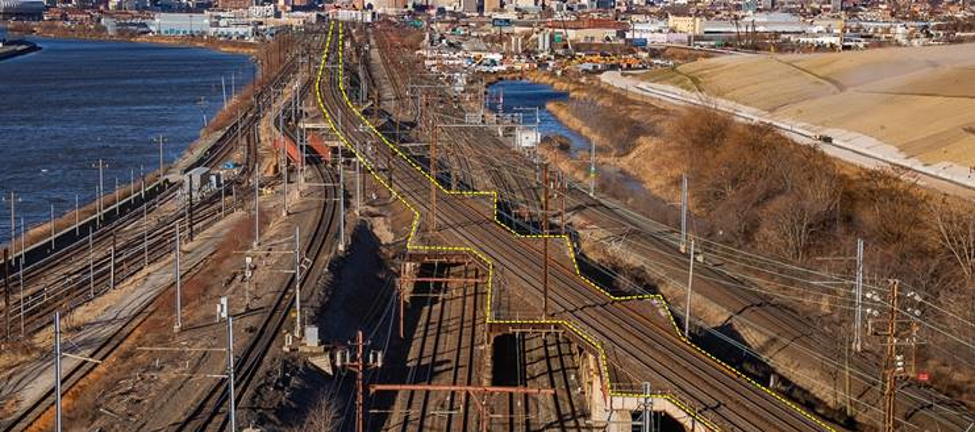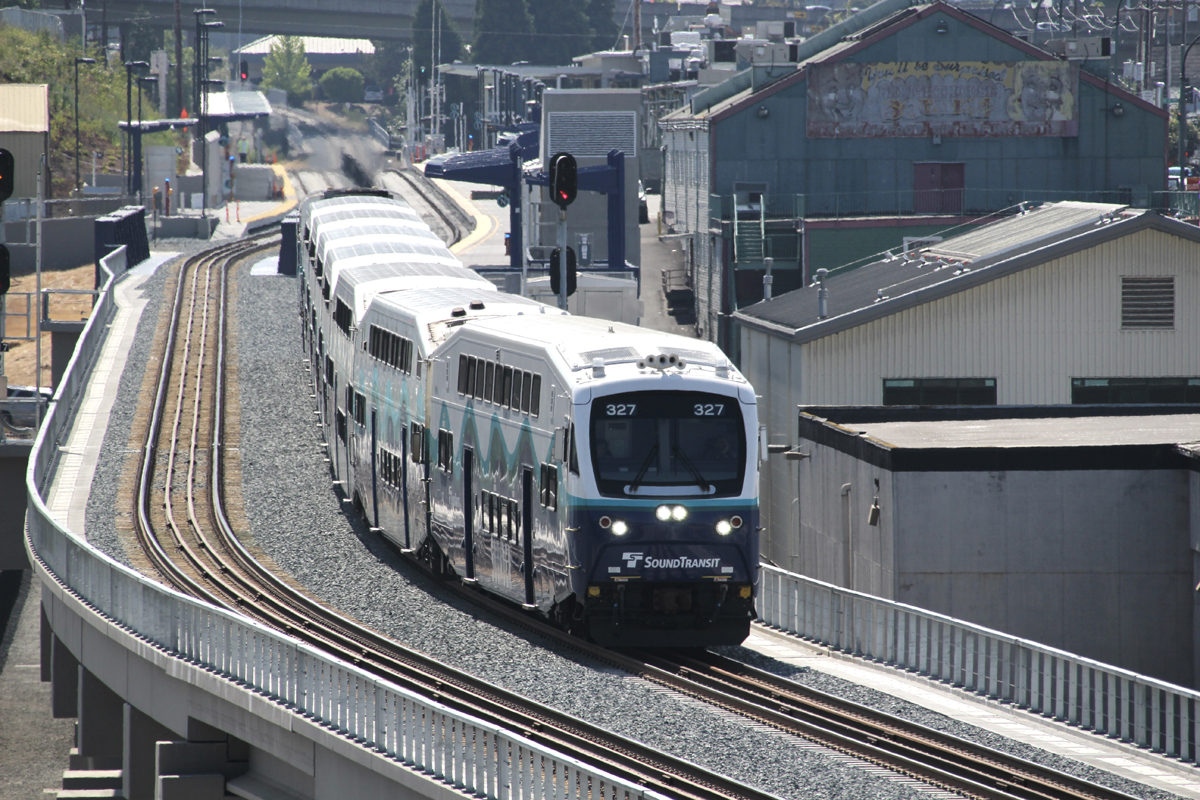
WASHINGTON — A series of Northeast Corridor efforts to replace century-old infrastructure highlights 11 passenger-rail projects receiving more than $233 million in Federal Railroad Administration grant funding.
The grants announced today (Thursday, Aug. 18) by the U.S. Department of Transportation are part of the Federal-State Partnership for State of Good Repair Program. The projects included are in eight states.
“From Amtrak on the East and West Coasts to commuter rail in cities across the country, Americans rely on intercity passenger rail to travel, get to work, and visit loved ones,” U.S. Transportation Secretary Pete Buttigieg said in a press release. “The Partnership Program improves upon this safe, affordable, and environmentally friendly mode of transportation and brings us closer to delivering the world-class passenger service Americans deserve.”
One of the awards, for concourse improvements at Chicago Union Station, was announced Wednesday by members of the Illinois congressional delegation [see “Federal grant will fund preparations …,” Trains News Wire, Aug. 18, 2022].
The Northeast Corridor grants include:
— In Connecticut, up to $65.2 million for replacement of a bridge over the Connecticut River, and up to $20 million for replacement of two power substations on the state-owned New Haven Line. The existing bridge, between Old Saybrook and Old Lyme, CT, opened in 1907. The new bridge will provide additional clearance for marine traffic, allow train speeds to increase from 45 mph to 70 mph, and reduce the number of delays for bridge openings. This is the second award of $65.2 million for the project, following one in 2020. More information on the project is available here.
The new substations on the New Haven Line, used by more than 350 commuter trains and 60 Amtrak trains, will be more reliable and energy efficient, less costly to maintain, and reduce greenhouse gas emissions.

— In New Jersey, up to $45 million for replacement of the Sawtooth Bridges, two 110-year-old structures in Kearny used by Amtrak and NJ Transit. The two existing bridges will be replaced with three new ones, with four tracks providing redundancy for operations during maintenance work or service disruptions. They will also allow an increase in operating speed above the current 60 mph. More information is available here.
— In Maryland, up to $20 million to fund final design for replacement of the 116-year-old, Amtrak-owned Susquehanna River Bridge between Perryville and Havre de Grace, also used by MARC commuter trains and freight service. Plans are for a new bridge that will allow train operation at up to 125 mph, with greater clearance above the river and a movable span that can open and close more efficiently. More information is available here.
— In New York, up to $10.7 million for work necessary in advance of the East River Tunnel Rehabilitation Project, and up to $4.5 million for preliminary stages of the Pelham Bay Bridge Replacement Project. The tunnel which carries Amtrak Northeast Corridor and Long Island Rail Road trains as well as non-revenue NJ Transit moves. Before tunnel work can begin, a connection to Sunnyside Yard must be reinstalled and improved, and an electric traction power cable must be relocated. More information is available here.
The Pelham Bay Bridge over the Hutchinson River in the Bronx dates to 1907. It still opens regularly for marine traffic and sometimes fails to close properly, and also has a 45-mile speed restriction. A new structure will increase clearance for marine traffic and raise operating speeds to 60 to 100 mph. More information is available here. The grant will fund preliminary engineering and completion of necessary environmental documentation.
Projects elsewhere receiving grants are:
— In New York, up to $28.2 million to replace a 520-foot-long, low-level platform with a high-level platform at Rhinecliff Station, 90 miles from New York City on the route of Empire Service trains. The project will also include new access to the platform including stairs, elevators, and a pedestrian brides, as well as track and signal work needed to allow an increase in Empire Service operations.
— In California, up to $27.3 million for improvements in Oceanside, Calif., on the Surf Line route used by Amtrak, Metrolink, and BNSF freight moves. The project will replace a 100-year-old, single-track bridge over the San Luis Rey River with a two-track structure, as well as improving a grade-crossing, bike path, pedestrian underpass, grading, drainage and signals.
— In Massachusetts, up to $7.6 million for replacement of the more than century-old South Elm Street Bridge on the MBTA’s Haverhill Line, which is also used by Amtrak traffic. More information is available here.
— In Michigan, up to $1.6 million for reconstruction of five deficient bridges on the state-owned rail line between Kalamazoo and Dearborn, used by Amtrak’s Wolverine and Blue Water trains. The work will improve reliability, increase load ratings, and avoid future bridge closures.














Despite immediate national repulsion in reaction to the recent revelation in the New York Times of excessive (and generally agreed upon undeserved) corporate management bonuses at Amtrak, what explains the perpetual silence of the political powers, media, and taxpayers in the states outside of the Northeast Corridor to federal funding of the NEC today? Even Sleeping Beauty eventually woke-up after taking a bite of the apple.
How was it decided in the fog of night that to give the new Conrail a running start, the feds in 1976 saddled the recent, under-funded start-up, Amtrak (1971), with the burden of owning (including operating and maintaining) the NEC between Boston-Washington? Such a massive financial dependence would only grow over time, given how Amtrak was deprived of major dedicated funding to maintain and repair NEC infrastructure.
Compounding this financial fiasco was the toleration of Congress to enable Amtrak to forego the collection of appropriate funds from the Northeastern commuter rail lines since 1976 for their operating along the NEC (until mandated by Congress in December, 2015). And where was the uproar from the non-NEC states when Sen. Rockefeller’s staffer created PRIIA in 2009 to charge all non-NEC states “full boat” for state-supported Amtrak services under 750 miles? Why was it tolerated for the plan to give the NEC states a free ride?
That Capitol Hill staffer is now CEO of Amtrak who true to Potomac politics brushed aside his competitors by successfully working in cahoots with Amtrak’s Board Chair who was recently re-appointed for the umpteenth time, without even a vote by Congress. With hands locked they now have each other’s back to sacrifice the long distance rail sector when no longer a convenient dumping ground for extraordinaryNEC costs; primary focus on real estate opportunities.
Put aside momentarily the repetition compulsion of these two senior leaders of Amtrak who make the ghosts of Edsel blush, e.g., over zealously laying off employees in epidemic that crippled the long distance trains impacting revenues, customer satisfaction, operations/maintenance, etc. and just look at the accounting ledger. If the NEC states had been required under PRIIA to pay for their twice per hour, bi-directional trains between BOS-WAS (457 miles); if the Board Chair had required full payment by the commuter lines using the NEC, than the NEC states would have been paying for the maintenance/repair required for the NEC, just as Illinois, Wisconsin, etc. Would costs for NEC schedule frequencies been gamed as pushed on California’s LOSSAN, San Joaquin, and Capitol JPAs?
Who has bought the silence of Congress, GAO, and OIG–and media, to cost shift the significant maintenance costs of the NEC, that even today these gatekeepers continue to snooze at the (non-NEC) taxpayers expense?